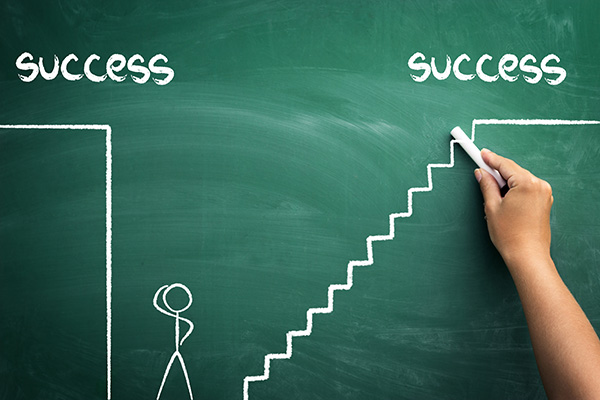When you want to improve things, you have two approaches: small steps or radical change. Both have their advantages. Kaizen and Kaikaku oppose and complement each other. I recommend using both, depending on the situation and your context.

Continuous improvement is a box of tools and methodologies. Kaizen and Kaikaku are two ways of working, two philosophies, two approaches to improve processes.
Kaizen and Kaikaku are obviously Japanese terms, Kaizen means “continuous improvement”, Kaikaku means “radical change”. It is easy to understand the difference between these two terms. Kaikaku is a word less used than Kaizen, we sometimes speak of Blitz (from the German “lightning”), Kaizen Blitz or Blitz event, but the principles are the same as Kaikaku.
Kaizen: one step at a time
Kaizen is a slow and progressive approach. I often call it the baby steps method. We are moving forward, slowly, taking our time, and we are improving daily. This approach is intended to be poised, it brings good results, but it takes more time to achieve them. It also takes up fewer resources. It causes less resistance.
This is how a culture of continuous improvement can develop and be sustained. In general, the improvement strategy is defined by management, based on customer expectations and the analysis of internal difficulties. The ingredients of a successful Kaizen approach, and therefore the achievement of results in the long term, are :
- the involvement of management in the process,
- the presence of a resource (even on a part-time basis) to ensure the follow-up of the process
- the empowerment of each member of the organization in the process.
Kaikaku: dramatic changes
On the contrary, Kaikaku is an approach based on rupture and radical change. It is a process that has a very precise mandate: it is often limited to a single type of product, to a piece of equipment or to a well identified problem. The Kaikaku is short, since it must be radical. It usually lasts less than a week.
A team gathers around the problem and carries out the entire process in a very short time. In the service world, it’s the Design Sprint. Resources external to the process are often used to help make the changes in this short time frame. It is an approach that is very popular because, although it requires a lot of effort, it produces results quickly.
With a good team, a Kaikaku will give good results, but for the company to win, this Kaikaku must have been decided according to the strategic needs of the company. Kaikaku can be stressful, as it causes a rupture, so it is important to focus on the projects carried out according to this philosophy.
How to combine the two approaches?
Depending on your context, and your organizational culture, you will choose to start with one or the other approach.
If you are on the Gemba, and you see an opportunity, Kaizen will be easier to access. If you have good arguments, you can get the time and teammates to do a Kaikaku, but it will require you to invest some effort.
If you are new to an organization, and have decision-making power, a Kaikaku is a good way to start an improvement process. By carefully choosing the object of your Blitz, you will surprise and dazzle everyone. You will then be able to alternate between small daily actions and more important projects.
Kaikaku events are a good way to level out the seasonal workload. Both techniques should be part of your emergency response plan. By having a list of small improvements to implement, or larger projects to explore, you ensure that you have activities for your teams if production is stopped for several hours or days.
The two approaches being complementary, they can be combined to go further in the improvement process. Kaizen helps deploy and maintain the culture of continuous improvement on a daily basis. The Kaikaku provokes a break and makes a subject move quickly.
